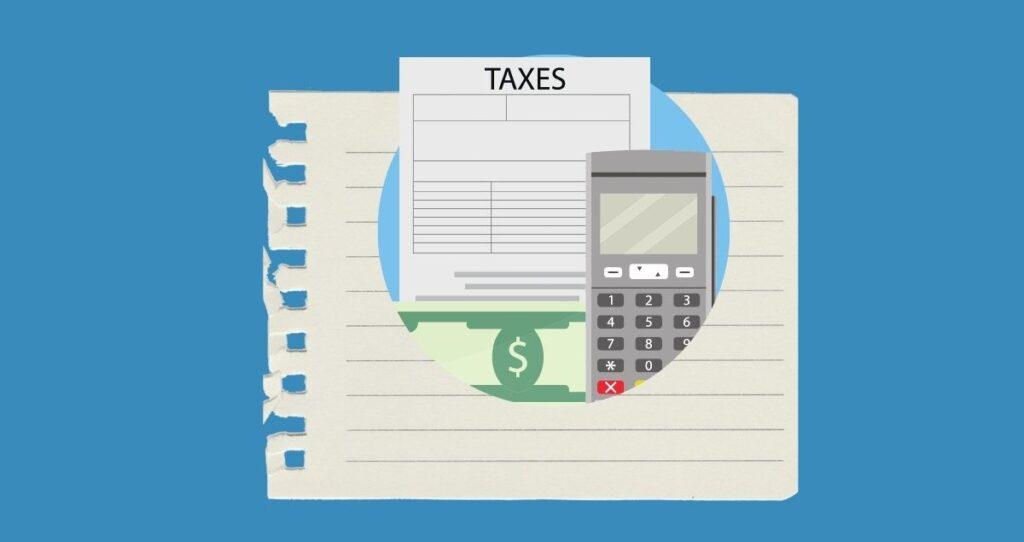Diversification is an investment strategy that long-term investors use to reduce risk due to market volatility. Your portfolio is diversified if you have a good mix of asset classes such as bonds, stocks, and foreign assets in your investment strategies. Since different assets and investments perform differently during different economies, holding a good mix of asset classes such as stocks, bonds, and foreign equities minimizes your portfolio’s volatility and reduces risk. How do you diversify a portfolio, and why is diversification the best investment strategy?
Ideally, a well-diversified portfolio would require holding assets from multiple sectors and geographical locations. To diversify your portfolio, you can purchase stocks from various industries, bonds, overseas equities, real estate, cash, and cash equivalents.
In this article, I will show you the best way to diversify your portfolio to minimize risk in your investment strategies.
How do you diversify a portfolio, and how does diversification work?
Diversification is an investment strategy where you spread your investments to limit the downside if any of your assets perform poorly. A well-diversified portfolio protects your money from market volatility over a long time while maintaining a relatively good return on investment.
To diversify your investments and minimize risks, ensure that no one asset dominates your holdings. While holding stocks is part of diversification strategies, keeping a large percentage of your money in a single stock is not a sound investment strategy. For example, holding 40% of your money in Apple stock, 50% in bonds, and 10% in cash is risky.
This is because the 40% held in Apple stock can weigh down your portfolio if Apple performs poorly in the future. The risk of losing that 40% investment is also high if Apple goes out of business.
A good diversification strategy is to spread your investments across multiple assets and diversify within each asset class. For example, instead of holding 40% of your funds in a single stock, you can diversify your funds across multiple sectors in the stock market. You can have tech stocks, healthcare stocks, utilities, and consumer staples. Even if the stock market declines, your risks will be minimized as some sectors might do better during a recession.
When diversifying your investment portfolio, you can consider foreign equities, bonds, cash and cash equivalents, fixed-income assets, and real estate.
You might also like: 8 things to do before you start investing
What are the benefits of diversification?
While you might be tempted to hold one asset in your portfolio, you can quickly lose all your money if that investment loses value. You probably heard the term, ” Do not put all your eggs in one basket.” Putting all your investments in a single asset means you are exposed to 100% of risks when markets take a different turn.
You can mitigate all these risks by diversifying your portfolio. When you diversify your investments, you automatically reduce the risk of anyone’s investment weighing down your portfolio. If you invested in assets A, B, C, and D and asset A does poorly, you will still maintain a good return from B, C, and D. Diversification helps you sustain a good return on investment while shielding your investments against market downturns.
You might also like 15 Ways to Become Rich Without Investing in Real Estate.
What does a well-diversified portfolio look like?
While there is no single formula for asset allocation and portfolio diversification, there are some basic principles each investor should follow. All assets perform differently, and having a good mixture of asset classes helps cope with market volatility and reduce risks.
So, what does a well-diversified portfolio look like?
A well-diversified portfolio should have fixed-income assets such as bonds, equities(stocks and stock funds), foreign equities, real estate assets, cash, and cash equivalents. To avoid over-diversification, you should maintain at least two different asset classes but not more than four types of assets in your investments. For example, most investors have stocks and bonds in their portfolios.
This is because stocks and bonds tend to have an inverse relationship. When bond prices increase, stock prices fall, and vice-versa. This means when you hold stocks and bonds, one asset acts as a hedge against the other asset’s downfall. This does not mean you only need stocks and bonds in your investment strategies.
If you like real estate, it does not hurt to add real estate, such as property, into the mix. The key is to stick to your investment strategies and avoid too much risk, which will help you maintain an above-average yearly return on investment.
Different ways to diversify your portfolio/investments
Diversification comes in many forms and types. For example, you can diversify within the same sector or across multiple sectors. This does not mean it is the only way to diversify. Here are different ways to diversify your investments.
Diversify across companies
This diversification involves holding assets across different companies. For example, if you invest in a stock where the company’s performance depends on one person, the stock can plummet if that person quits or dies. To minimize this risk, you can keep a small position in that company and buy other companies to hedge against its downfall.
Diversify across industries and sectors.
Stocks come from many sectors and industries. Buying stocks from multiple sectors protects you from a market downturn if one or multiple sectors perform poorly. For example, if you buy airlines, oil, hotels, and booking companies, your risk will be exponential. This is because something that affects the travel industry, such as Covid-19, will directly affect all these sectors. In this case, people will stop flying and travel less, leading to fewer hotel and travel booking sales and reduced oil prices.
How can you spread your assets across industries other than the travel and oil sectors? Here is how you can diversify across multiple sectors and hedge against the risk posed by the oil and travel industry in your portfolio.
When people are not traveling, they spend too much time at home. In this case, you can diversify your investment by holding consumer goods and staples, entertainment, streaming services, etc.
Diversify in foreign investments.
Another way to diversify your investments is to hold foreign assets. Holding foreign assets, however, comes with some challenges as companies’ values decrease due to many factors, such as political climate and trade policies. For example, if 50% of a Chinese company’s profit comes from exporting its goods to U.S. markets, your portion will be affected if the U.S. imposes sanctions on goods from China. It is also difficult to know how exactly a particular company is doing. Assets in countries that go through turmoil and with unstable political changes also pose more risk.
It is best to hold foreign equities that are stable and from stable countries. This will minimize the risk of losing money due to competition and lower sales. Even if the political climate affects the company’s sales, it will still survive once sanctions are lifted or look for other markets. Small companies usually go bankrupt when their sales are affected by a change in market stability due to a lack of capital to adapt and keep operations going while looking for other markets.
Diversify across different time frames.
When investing, you should always consider the impact of long-term and short-term investments on your portfolio. Some investments, like long-term certificates of deposit, offer a high return on investments due to the higher risks of not taking advantage of future high rates. On the other hand, short-term investments such as a 3-month CD come with a much lower interest as you are not exposed to too much risk.
Another good example is comparing an online start-up with customizable designs to a tech company that will take years to be profitable. The online start-up might report huge sales during its debut as people flock to its website. However, due to competition, it is unlikely to sustain a high level of sales for a long time.
On the other hand, a tech company can take 5 to 10 years before reporting a profit. But the same company might stay in business and be profitable for decades. When diversifying your portfolio, consider these factors and analyze how different investments will perform in 10 to 20 years, as well as evaluate their short-term performance.
An example of a well-diversified portfolio
When diversifying your portfolio, it is critical to form a portfolio based on your risk tolerance. For example, equities yield a higher ROI than bonds. However, holding a large percentage of equities might not be a good investment strategy if you don’t like volatility.
What is an excellent example of a well-diversified portfolio?
Many investors stick to the 60/40 portfolio, where 60% is in stocks and 40% in bonds. By holding a slightly higher percentage of stocks, you get a higher ROI while maintaining low volatility. This portfolio, however, does not include cash or cash equivalents, which is why some investors prefer a different diversification strategy.
To include cash and cash equivalent in the mix, some investors prefer 50% stocks, 40% bonds and fixed-income assets, and 10% cash and cash equivalent. Such a portfolio means you will have a modest return on investment while having interest payouts from bonds. If markets decline, you can use some cash in the 10% basket to take advantage of the dollar cost-averaging investment strategy.
You might also like five different types of portfolios: Which portfolio is right for you?
What is the risk of the 60/40 portfolio?
A 60/40 portfolio minimizes the downside risk and lowers your long-term growth. According to Goldman Sachs, the main risk of a 60/40 portfolio is inflation. The central bank monitors the inflation level and adjusts it to keep it relatively low.
In some instances, however, Goldman Sachs explains that the central bank could tighten rates, pushing real rates and weighing down on stocks and bonds. Another risk of a 60/40 portfolio is that bonds tend to return lower than stocks. By holding a large percentage of bonds in your portfolio, your return on investment lags behind someone with more equities, such as a growth portfolio with 80% equities and 20% bonds.
Extra investing tips
How to make money with CDs: Make $200/mo on CDs
What is a growth portfolio, and how do you create one?
How to invest without losing money: Investing guide for newbies









